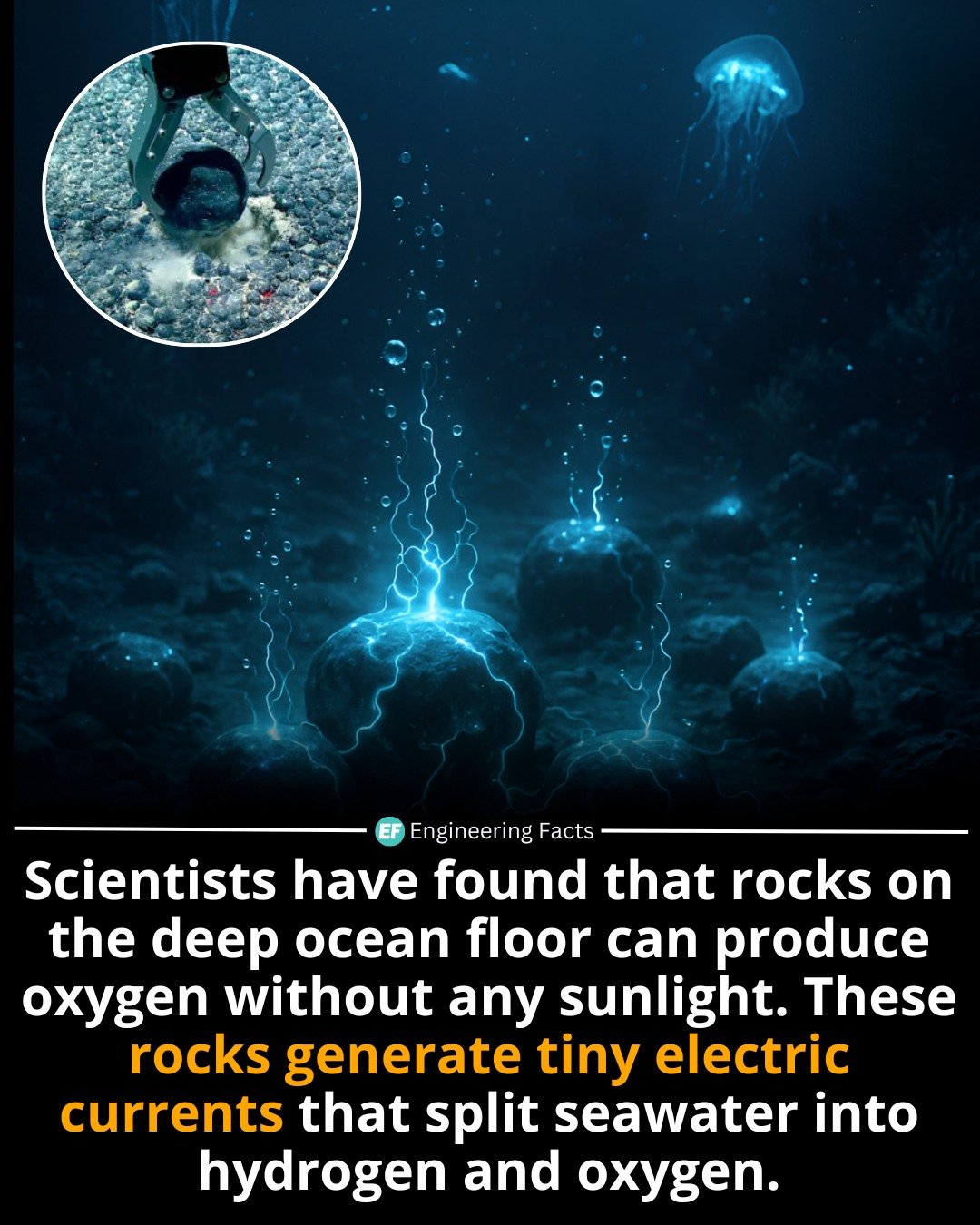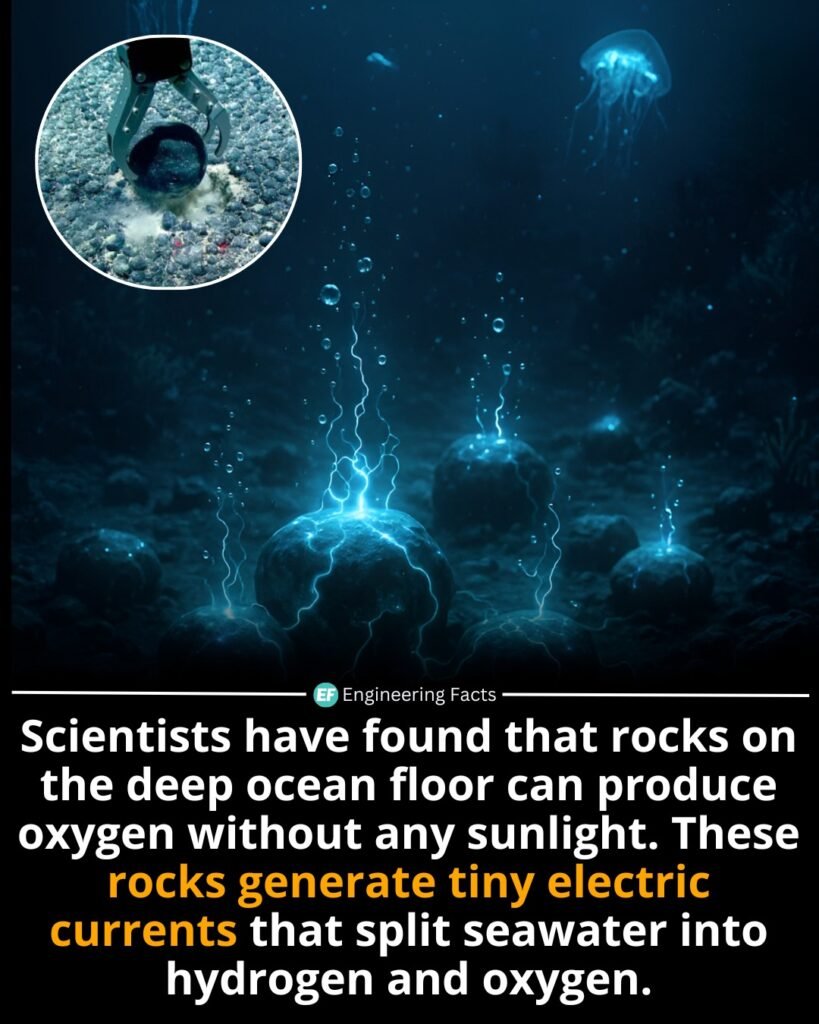[ad_1]
A groundbreaking discovery in the Clarion–Clipperton Zone of the Pacific Ocean reveals that polymetallic nodules—metal-rich rocks typically composed of manganese, nickel, copper, and cobalt—can generate oxygen through electrochemical reactions in complete darkness. 🌊⚡
Known as “dark oxygen” production, this process challenges the assumption that sunlight-driven photosynthesis is the only natural source of oxygen. Instead, these nodules produce tiny electric currents that split water molecules, potentially supporting deep-sea ecosystems far from the sun.
Even more remarkably, this mechanism could explain how microbial life survives in the pitch-black abyss—and may offer insights into how extraterrestrial life could exist beneath the icy crusts of moons like Europa or Enceladus. 🌌🧬
,OceanScience ,DarkOxygen ,DeepSeaDiscovery ,Astrobiology ,Electrochemistry
Stay Connected with NewsRT:
For the latest headlines and urgent updates, visit our Breaking News section. If you want to stay informed about global affairs, our World News page brings you top stories from around the world.
For entertainment lovers, check out our Entertainment category to catch up on celebrity news, movies, and trending shows. Sports fans can follow live scores and in-depth match reports in our dedicated Sports section.
Stay on top of your health with expert insights and wellness tips on our Health page. For the latest financial updates, market trends, and stock analyses, visit our Stock Market section.
Don’t forget to explore our homepage for more top stories, exclusive reports, and real-time news updates curated for you.
